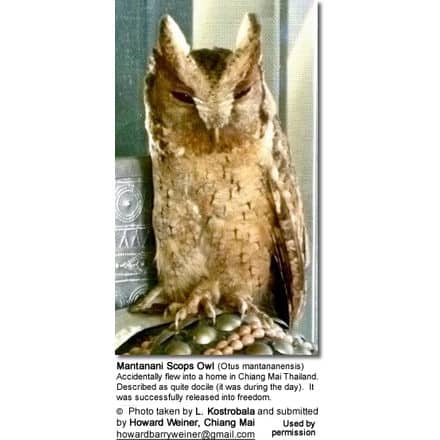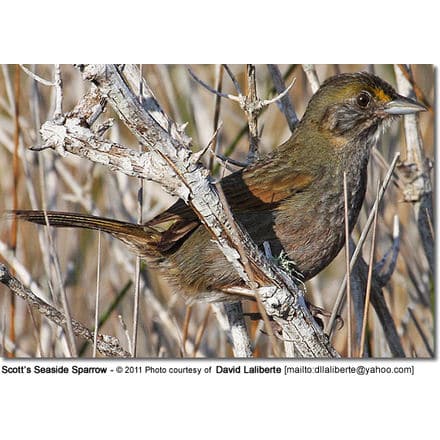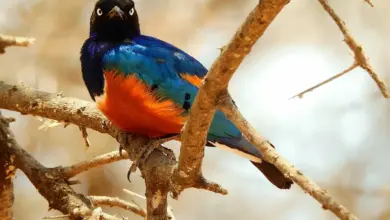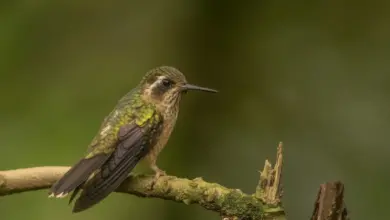How Long Do Peacocks Live?
Peacocks, or more correctly Peafowl, can live up to 20 years old although most wild peacocks have a shorter lifespan of less than 15 years.
In the wild, male peacocks often outlive their female counterparts by a few years. The male usually lives to be between 10 to 12 years old while the female’s average lifespan is around ten years.
It has been claimed on other websites that peafowl can live as long as 50 years in captivity, but there is no documented evidence of these assertions, and even in captivity is is rare to see these birds live any longer than their maximum 20 year lifespan, although it is possible.
Peafowl vs Peacock
Peafowl is the correct term for all the birds in the “peacock” family. The Peacock is the correct term for a male Peafowl. The female peafowl is called a Peahen and newly hatched chicks are called peachicks.
A group of peafowl, regardless of sex or age, are called a bevy.
There are three main species of peafowl including the Indian Peafowl (Pavo cristatus), Java Peafowl (Pavo muticus) and the Congo Peafowl (Afropavo congensis). Two of these species are also denoted by their colors.
The Indian Peafowl is commonly called the Blue Peafowl and is the most common type of peafowl that’s kept in zoos and farms in the world and whose feathers have adorned royalty for thousands of years.
The Java Peafowl is also commonly referred to as the Green Peafowl. This species is broken down into three subspecies denoting their country of origin including Java Peafowl (Pavo muticus muticus), Burmese Peafowl (Pavo muticus spicifer) and Indo-Chinese Peafowl (Pavo muticus imperator).
How Long Do Peacocks Live In Captivity?
Captive birds often live longer than their wild counterparts due to better diets and less risk from predators, although as Martha Stewart recently learned, this is not always the case.
And although keeping peafowl as pets has grown in popularity throughout the world in recent years, keeping them isn’t always the easiest thing to do.
Keeping peafowl requires large areas for these birds to roam as they are ground eating birds that mostly forage for food. Peafowl also need to fly, especially if they feel threatened, and feel safest when sleeping in trees at night in groups.
Peafowl can also be aggressive and often “rule the roost,” although they are able to get along with other domesticated fowl like chickens and ducks.
Peafowl are social birds that do not do well on their own or in pairs. They need other peafowl around and will forage and sleep together as a group. If you’re planning to keep peafowl, start with a group of six or more including only one male Peacock.
How Many Peacocks Should I Keep in Captivity?
It is best to have only one male peacock per five to six peahens as males will create a harem of females that can include up to six female peafowl.
If you include more than one male peacock, make sure they have adequate land to roam and a large number of peahens so there are no “turf” wars or fighting for mates.
In their natural habitat, peafowl are almost always together as a social group and hunt, forage and sleep together as a group. Try to mimic their natural way of life for a happy and healthy Peafowl.
What Do Peafowl Eat?
Peafowl are omnivores that eat almost anything they can find on the ground including insects, larvae, small animals and reptiles and even whatever is growing in your vegetable garden, stems and all.
People that raise peafowl often use cat food as a treat for these birds although dried forms of food like this aren’t the best for them.
Rather, birds in captivity should be fed a mix of fresh vegetables like spinach and kale along with corn meal and then left to forage for other natural foods like grubs and insects to round out their nutritional requirements.
Birds in captivity also should be fed fewer calories than those in the wild as wild birds roam over great distances in search of food and therefore burn most of the calories they are acquiring.
Where Do Peafowl Live?
In captivity these birds can be found throughout the world in zoos and even people’s backyards. It’s believed the Indian Peacock was brought to Athens as early as 450 BCE and later brought to Europe by Alexander the Great around 323 BC.
In the wild, peafowl are found in Southern Asia, primarily India and Sri Lanka, and in the Congo Basin in Africa.
The brightly colored male peacock that most people are familiar with in art and pictures are the Indian Blue Peafowl, more commonly known as the Blue Peacock. They are found throughout India, parts of Pakistan and Sri Lanka.
The Green Peacock inhabits Southeast Asia from Java to Myanmar and southern China, but are now sadly on the endangered species list as these countries grow economically and industrialize. Loss of habitat, poaching and the illegal sale of these birds are taking a toll and it’s believed that there are fewer than 20,000 of these magnificent birds left in the wild.
The lesser known and less adorned Congo Peacock can be found in the Democratic Republic of the Congo where it is designated as the country’s national bird and was only recently discovered by Dr. Chapin in 1936.
Already on the IUCN Red List as Near Threatened due to habitat loss, it is estimated that there are only between 2,500 and 9,000 birds left in the wild.
Threats to Peafowl Lifespan
Habitat Loss is the most prevalent threat to all three species of peafowl. As the world becomes more industrialized, more woodlands are destroyed for lumber, farming and urban developments which in turn not only threatens all peafowl species, but other species of animals as well.
Peafowl need vast areas to forage, mate and live a normal life unimpeded by humans and urbanization. And even though countries are recognizing the impact this is having on their wildlife and are setting aside swaths of land as protected areas, the numbers are still dwindling.
Another threat to all species of peafowl is predators. A peafowl’s best protection against predators is its ability to fly away from danger, often to hide in the treetops where they also sleep at night for protection. With the steady decline of natural habitat, this leaves them in closer proximity to other natural predators like tigers, civets, jackals, and wild as well as domesticated dogs.
Peafowl can not fight off predators with sharp teeth and claws, and due to their ;arge size they make an easy meal.
But the worst predator is man. People still hunt these wild birds for their meat which is thought to be a delicacy in the same way shark fin is in China. And similarly to shark fin, the truth is peafowl meat is actually characterized as gamy and tough and not at all “delicious”.
But the biggest human threat comes due to the bird’s own beauty, its feathers. There has always been and still is a huge illegal trade both in the peacock’s feathers as well as the birds themselves. Most birds you see in zoos or someone’s backyard came from the wild, or are the offspring of these trafficked birds.
In Conclusion
Peacocks as well as all peafowl are majestic and beautiful birds which have adorned books and paintings for centuries. But the quickly disappearing species needs help if it is to continue to thrive in the wild.
A few things you can do to help them is to never buy feathers or other ornamental objects made from the use of their feathers.
Furthermore, decide to keep other more domesticated birds as pets like chickens or even turkeys. Peafowl have no place on a farm other than to look pretty. Their meat is not sought after and they only lay eggs one month of the year. So why keep them?
Together we can make sure that the peacock can have a chance to live their full life expectancy of 20 years.
And no matter how long a peacock lives, I believe they should all have the ability to live as long as they can in the freedom of their natural habitats and not be held in captivity in a strange land.




